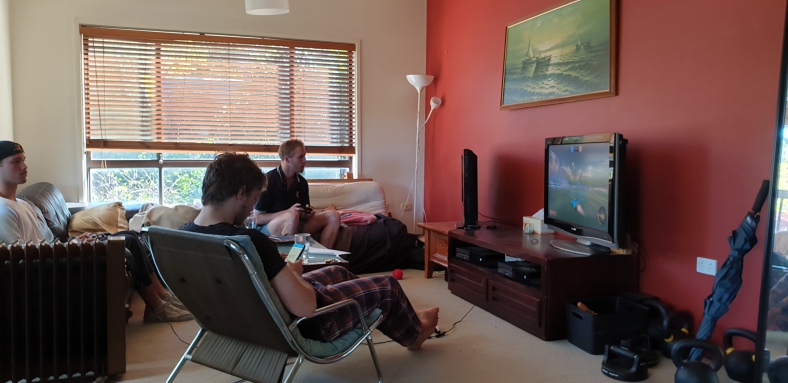This week we are tasked with constructing our post’s around the concept of the ‘networked home’ and what this means for us specifically. In order to do so properly I must first give evidence of the place and environments in which I live.
I must also point out that my home living situation is different from most, in that the property we live in is an asset of my parents, giving me the ability to live with who I want for as long as I wish. This dynamic is mentioned as it gives a specific and relevant insight into what my ‘networked home’ looks like and how it may differ.
To summarize my situation:
- Lived in Binda St Keiraville, NSW since 2016.
- Current Housemates are 2 of my best friends and my younger cousin (who is also a friend), same situation for the last year and a bit.
- NBN has been linked up to our house for over a year and a half now.
- 2 TV’s and 2 games consoles connected.
- Large living, dining and recreational (outdoor decks/pool) areas, with small sectioned off bedrooms (picture below is of open plan living room area where we spend most of our time together).

To discuss the dynamics of our ‘networked home’ I will first bring to bear Julie Cohen’s (2012) concepts of the networked space and their relevance to social interactions with information technologies. Primarily this will be through the use of the concept of networked technologies and how “Flows of information through networked space alter social patterns of interaction and resource allocation.” (Cohen 2012, p. 33)
In our home there is an almost constant connection to different networked technologies, be it gaming, social media, or television and other streaming services. We also inhabit a multitude of personal preferences, ideologies and social environments which changes the types of, and interaction with information technologies. The main difference is that almost all of this interaction with the technology happens in the social space of our living room, very rarely will house members occupy different rooms and screens, unless it relates to a personal/university project.
This is where our house differs from the one described by Melissa Gregg (2010, pp. 156 – 157), in which she demonstrates the tendencies of computers to generate a succession of isolated experiences within the household. As almost all of the interaction with networked technology happens in this social space, we often collectively experience these influences and occurrences in a way that diminishes the individual isolation of the experience.
To exemplify this, in almost any situation where a piece of information or humor is experienced by a member, it is instantly shared with the others and discussed. This discussion and collective experience of the networked home gives us a unique perspective, in that all interactions are measured and compared within this social environment, so that the differences of conferred meaning are diminished, along with the isolation of the experience. An important point to notice is this collective engagement with the technology minimizes the irritation with each other when networked technology (internet speeds) are not working efficiently, as everyone is engaging in activities together there is no space to apply blame for the disruption.
References:
- Cohen, J 2012, ‘From the Virtual to the Ordinary: Networked Space, Networked Bodies, and the Play of Everyday Practice’, Configuring the Networked Self, Yale University Press, London, pp. 32-58, accessed online at http://www.jstor.org/stable/j.ctt5vm24d.5
- Gregg, M 2010, ‘Rural Melancholy and the Promise of Online Connectivity’, Cultural Studies Review, vol. 16, no. 1, pp. 1-15.